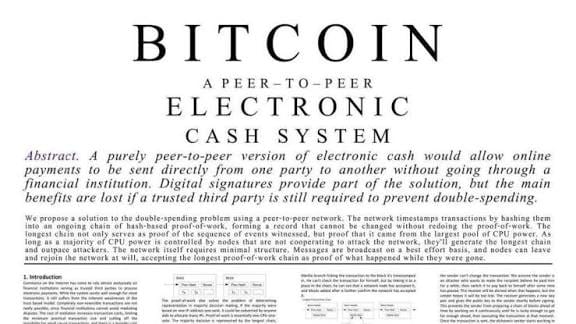12.1 The History of Cryptocurrencies: Key Milestones (2008–2025)

This lesson explores the key innovations, events, and transformations that have shaped the cryptocurrency landscape from the birth of Bitcoin in 2008 through to the most recent developments. Cryptocurrencies are digital assets using cryptography for secure, decentralized transactions, with Bitcoin as the pioneer. We'll trace how they evolved from niche cryptographic projects to global financial technologies, influenced by regulatory shifts, technological advances, and economic events. The crypto market has matured to a $2.5+ trillion capitalization, with daily trading volumes in the billions. You will learn how cryptocurrencies transitioned from theoretical concepts to practical applications, understand major events including technical innovations, market booms and busts, hacks, and regulations, trace the impact of public adoption, institutional interest, and government intervention, and develop a timeline-based mental map of how the crypto space has matured over nearly two decades.
Foundations: Before Bitcoin (1980s–2007)

Before Bitcoin was created, several important ideas laid the foundation for cryptocurrencies. These concepts introduced key building blocks of modern cryptocurrencies: decentralization, digital scarcity, and cryptographic security. Visionaries focused on privacy, security, and decentralization to address issues like double-spending (using the same digital money twice) without central authorities. This period set the stage for blockchain by introducing cryptographic proofs and electronic payment systems, though these ideas were mostly theoretical and lacked practical implementation until the 2008 financial crisis exposed flaws in centralized banking.
- 1983 - eCash by David Chaum: American cryptographer David Chaum introduced eCash, a system for anonymous electronic money using blind signatures for privacy. It was implemented via his company DigiCash in 1990 but failed commercially due to centralization and lack of adoption. This milestone highlighted the need for untraceable digital transactions, influencing later privacy coins like Monero.
- 1997 - Hashcash by Adam Back: Developed as an anti-spam tool, Hashcash introduced proof-of-work (PoW), requiring computational effort to create "stamps" for emails. This PoW concept became Bitcoin's mining mechanism to prevent double-spending and secure the network.
- 1998 - B-Money by Wei Dai: Proposed on the Cypherpunks mailing list, B-Money outlined a decentralized currency using PoW for creation and digital signatures for transactions. It inspired Satoshi Nakamoto, who referenced it in Bitcoin's whitepaper.
- 1998 - Bit Gold by Nick Szabo: Szabo's Bit Gold used PoW chains for secure, unforgeable digital assets, resembling blockchain. Though never implemented, it influenced Bitcoin's design and popularized "smart contracts."
These precursors solved theoretical problems but lacked practical implementation, paving the way for Bitcoin amid the 2008 financial crisis, which fuelled distrust in banks and inspired the first functional cryptocurrency.
Phase 1: The Bitcoin Genesis (2008–2009)

The 2008 global financial crisis fuelled distrust in banks, inspiring the first functional cryptocurrency. Bitcoin introduced blockchain—a distributed ledger for peer-to-peer transactions without intermediaries. This phase marked Bitcoin's transition from a hobbyist project to a digital asset with real-world value, establishing crypto as a viable asset class.
- October 31, 2008 - Bitcoin Whitepaper Published: Pseudonymous creator Satoshi Nakamoto released "Bitcoin: A Peer-to-Peer Electronic Cash System" on a cryptography mailing list. It described a decentralized network using PoW to solve double-spending, enabling trustless transactions. This document, still foundational, sparked the crypto revolution.
- January 3, 2009 - Genesis Block Mined: Satoshi mined the first block (Block 0), embedding a headline from The Times: "Chancellor on brink of second bailout for banks," critiquing fiat systems. This launched the Bitcoin network with a 21 million coin cap.
- January 12, 2009 - First Bitcoin Transaction: Satoshi sent 10 BTC to Hal Finney, proving peer-to-peer transfers worked. This validated Bitcoin's core functionality.
Bitcoin started as an experiment but quickly gained traction among cypherpunks, establishing the core principles of decentralization and peer-to-peer value transfer.
Phase 2: Early Adoption and Growth (2010–2013)

This era saw Bitcoin's first real-world use, price discovery, and the emergence of infrastructure like exchanges, alongside regulatory scrutiny. Crypto diversified with new chains and use cases, marking the shift from experiment to asset class.
- May 22, 2010 - Bitcoin Pizza Day: Laszlo Hanyecz bought two pizzas for 10,000 BTC (now worth billions), the first commercial transaction. This showed Bitcoin's potential as money.
- July 2010 - Mt. Gox Launch: The first major exchange, Mt. Gox, facilitated trading, boosting liquidity. It handled 70% of transactions by 2013 but collapsed in 2014 due to hacks, highlighting security risks.
- October 2011 - Litecoin Launch: Charlie Lee's Litecoin, a Bitcoin fork, introduced faster blocks (2.5 minutes) and Scrypt mining, making it more accessible. It was the first major altcoin.
- 2012 - First Bitcoin Halving: Bitcoin's supply halved from 50 to 25 BTC per block, introducing scarcity. This event, recurring every four years, often correlates with price surges.
- 2013 - Bitcoin Price Boom and Media Attention: Bitcoin surpassed $1,000 for the first time. Altcoins proliferated (e.g. Namecoin, Peercoin). Regulatory bodies began evaluating Bitcoin’s legal status.
- April 2013 - Ripple (XRP) Network Launch: Focused on cross-border payments, Ripple's ledger enabled fast, low-cost transfers, attracting banks. It pioneered enterprise blockchain use.
- November 2013 - Bitcoin Surpasses $1,000: Amid hype and China's interest, Bitcoin hit $1,242, signalling mainstream attention but followed by a crash.
This period established crypto as a viable asset class, with Bitcoin's price discovery and the rise of altcoins demonstrating growing interest and diversity.
Phase 3: Expansion and Challenges (2014–2017)

Crypto diversified with new chains and use cases, but faced hacks and bubbles. This phase saw the introduction of smart contracts, the ICO boom, and network congestion, often without clear business plans, leading to regulatory crackdowns.
- February 2014 - Mt. Gox Hack and Collapse: Lost 850,000 BTC ($460M then), exposing exchange risks. It led to better security standards.
- November 2013 (published), July 2015 Launch - Ethereum: Vitalik Buterin's whitepaper introduced smart contracts, launching in 2015. It enabled dApps and DeFi.
- June 2016 - The DAO Hack: A $150M Ethereum DAO was exploited, leading to a hard fork creating Ethereum (ETH) and Ethereum Classic (ETC), debating immutability.
- August 2017 - Bitcoin Cash Fork: Forked from Bitcoin for larger blocks (8MB), improving scalability but splitting the community.
- 2017 - ICO Boom: Initial Coin Offerings raised $5.6B, funding projects like EOS, often without clear business plans, leading to regulatory crackdowns.
- December 2017 - Bitcoin Peaks at $19,783: Driven by hype, it marked the first major bubble.
This era highlighted crypto's potential for programmable money, but also vulnerabilities like hacks that eroded trust and spurred improvements in security.
Phase 4: Boom, Bust, and Maturation (2018–2020)

The "Crypto Winter" followed the 2017 boom, with prices crashing 80%, but innovation continued in privacy and scalability. Platforms like MakerDAO, Compound, and Uniswap paved the way for decentralized lending, borrowing, and trading, shifting interest toward building infrastructure alongside regulatory backlash.
- 2018 - Market Crash and Regulatory Backlash: The market crashes by over 80%, entering the “crypto winter.” U.S. SEC begins cracking down on unregistered securities offerings (ICOs).
- October 2018 - Fidelity Launches Crypto Services: Institutional entry signalled mainstream potential.
- 2019 to 2020 - Foundations for DeFi: Platforms like MakerDAO, Compound, and Uniswap pave the way for decentralized lending, borrowing, and trading.
- 2019 - Libra (now Diem) Announcement by Facebook: Proposed a stablecoin, sparking regulatory debates on big tech in finance; it was shelved in 2022.
- 2020- DeFi Summer: Ethereum-based DeFi protocols like Uniswap and Compound exploded, with TVL reaching $1B by mid-2020, introducing yield farming and liquidity mining. COVID-19 boosts digital asset interest as governments print money and traditional markets fluctuate.
- May 2020 - Third Bitcoin Halving: Reward halved to 6.25 BTC, preceding a bull run.
The ICO boom demonstrated fundraising potential but also highlighted scam risks, while DeFi laid the groundwork for decentralized finance, shifting focus from speculation to utility.
Phase 5: Institutional Era and DeFi/NFTs (2021–2023)

Institutional adoption accelerated, alongside booms in NFTs and DeFi, but crashes tested resilience. This phase marked the mainstreaming of crypto through NFTs and DeFi, but also exposed vulnerabilities in stablecoins and exchanges.
- February 2021 - Tesla Buys $1.5B Bitcoin: Elon Musk's announcement boosted legitimacy; Bitcoin hit $60K.
- March 2021 - NFT Boom with Beeple's $69M Sale: Christie's auction of Beeple's artwork popularized NFTs for art and collectibles.
- September 2021 - El Salvador Adopts Bitcoin as Legal Tender: First country to do so, promoting financial inclusion but facing IMF criticism.
- November 2021 - Bitcoin ATH at $69,000: Peak of the bull market.
- May 2022 - Terra-Luna Collapse: Algorithmic stablecoin UST depegged, wiping $40B, triggering market crash.
- November 2022 - FTX Collapse: Exchange failure due to fraud lost $8B, eroding trust and prompting regulations.
- 2023 - Building After the Crash: A cautious recovery begins. Developers focus on audits, security, and Layer-2 adoption. Governments start formalizing regulatory approaches. Ethereum ecosystem sees rising use of modular and cross-chain architectures.
The bull run showcased crypto's cultural impact through NFTs, but crises like Terra and FTX underscored risks, leading to calls for better regulation and security.
Phase 6: Regulation, Recovery, and Realignment (2024–2025)

Focus shifted to regulation, institutional tools, and recovery after the 2022 crash. Developers emphasized audits, security, and Layer-2 adoption, while governments formalized regulatory approaches. This phase emphasized recovery through regulation, with ETFs marking crypto's entry into traditional finance. Regulatory breakthroughs and institutional integration defined 2025, with Bitcoin reaching new highs amid global expansion. Innovation continued in tokenization and DeFi governance, as countries competed for crypto-friendly policies.
- January 2024 - U.S. SEC Approves Bitcoin ETFs: Spot ETFs from BlackRock and others brought $50B+ inflows, institutionalizing crypto.
- April 2024 - Fourth Bitcoin Halving: Reward to 3.125 BTC, contributing to 2025 bull run.
- June 2024 - EU's MiCA Regulation Enters Force: Standardized crypto rules across EU, focusing on stablecoins and AML.
- November 2024 - U.S. Election Influences Crypto Policy: Pro-crypto candidates, including Trump's victory, led to relaxed SEC enforcement and new frameworks in 2025.
- July 2025 - The U.S. Passes the GENIUS Act: Regulating stablecoins, audits, and reserve backing. SAB 121 repealed, limiting banks' crypto holdings. Regulatory authorities allow ETFs beyond Bitcoin (e.g. XRP, SOL). The SEC and CFTC issue joint guidelines for spot crypto listings.
- Institutional Integration: Coinbase added to the S&P 500, becoming the first crypto-native firm. More pension funds and sovereign wealth funds allocate to digital assets.
- Global Expansion: China launches its first offshore yuan-pegged stablecoin, AxCNH, via Kazakhstan. Pakistan launches the Pakistan Crypto Council to study blockchain policy. Countries compete over regulatory sandboxes and crypto tax regimes.
- Innovation Continues: Tokenization of real-world assets (RWA) grows (real estate, bonds, commodities). DeFi governance experiments mature (e.g. dual-token models, quadratic voting). Discussions begin around national crypto reserves—some propose holding BTC, ETH, XRP, etc. as strategic assets.
- August 14, 2025 - Bitcoin All-Time High of $124,496: Driven by ETFs, institutional adoption, and regulatory clarity. Projections suggest it could reach $200,000 by year's end.
- September to October 2025 - Major Conferences and Trends: Events like Cryptocurrency Research Conference (Sep 29), European Blockchain Convention (Oct 16-17), and Blockchain Life Forum (Oct 28-29) highlight AI integration, layer-2 scaling, and DeFi 2.0.
2025 solidified crypto's maturity, with regulations fostering innovation and stability.
Summary
Cryptocurrency history reflects a remarkable journey of innovation amid significant volatility, evolving from early conceptual ideas like Bitcoin’s whitepaper to a dynamic multi-trillion-dollar industry shaping the global financial landscape. This history highlights crypto’s resilience and transformative potential, driven by foundational technologies such as proof-of-work that paved the way for today’s groundbreaking applications in decentralized finance (DeFi) and non-fungible tokens (NFTs). Moreover, periodic crises and market disruptions have spurred the development of stronger governance frameworks and regulatory measures, underscoring the sector’s maturation. Staying informed about these ongoing developments is essential to understanding how cryptocurrencies continue to redefine the future of money and digital assets.

